Advertisements
Advertisements
प्रश्न
The following graph shows the temperature of a patient in a hospital, recorded every hour.
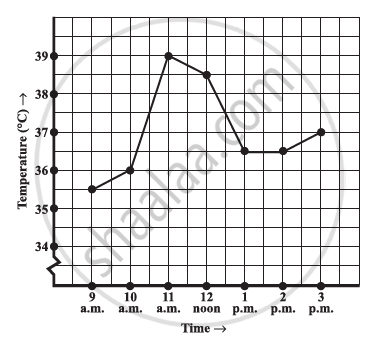
- What was the patient’s temperature at 1 p.m.?
- When was the patient’s temperature 38.5°C?
- The patient’s temperature was the same two times during the period given. What were these two times?
- What was the temperature at 1.30 p.m.? How did you arrive at your answer?
- During which periods did the patients’ temperature showed an upward trend?
उत्तर
- At 1 p.m., the patient’s temperature was 36.5°C.
- The patient’s temperature was 38.5°C at 12 noon.
- The patient’s temperature was same at 1 p.m. and 2 p.m.
- The graph between 1 p.m. and 2 p.m. is parallel to the x-axis. The temperature at 1 p.m. and 2 p.m. is 36.5°C. So, the temperature at 1:30 p.m. is 36.5°C.
- During the following periods, the patient’s temperature showed an upward trend.9 a.m. to 10 a.m., 10 a.m. to 11 a.m., 2 p.m. to 3 p.m.
APPEARS IN
संबंधित प्रश्न
The following line graph shows the yearly sales figures for a manufacturing company.
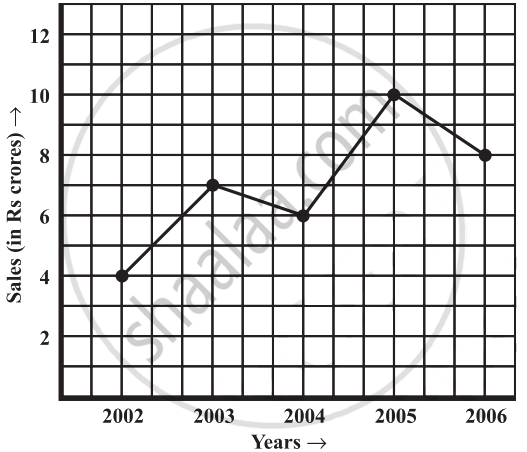
- What were the sales in (i) 2002 (ii) 2006?
- What were the sales in (i) 2003 (ii) 2005?
- Compute the difference between the sales in 2002 and 2006.
- In which year was there the greatest difference between the sales as compared to its previous year?
Can there be a time-temperature graph as follows? Justify your answer.
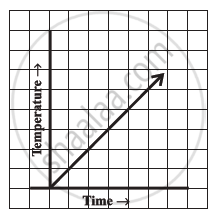
The following table shows the number of patients discharged from a hospital with HIV diagnosis in different years:
| Years: | 2002 | 2003 | 2004 | 2005 | 2006 |
| Number of patients: | 150 | 170 | 195 | 225 | 230 |
Represent this information by a graph.
Draw the velocity-time graph from the following data:
| Time (in hours): | 7:00 | 8:00 | 9:00 | 10:00 | 11:00 | 12:00 | 13:00 | 14:00 |
| Speed (in km/hr): | 30 | 45 | 60 | 50 | 70 | 50 | 40 | 45 |
The runs scored by a cricket team in first 15 overs are given below:
| Overs: | I | II | III | IV | V | VI | VII | VIII | IX | X | XI | XII | XIII | XIV | XV |
| Runs: | 2 | 1 | 4 | 2 | 6 | 8 | 10 | 21 | 5 | 8 | 3 | 2 | 6 | 8 | 12 |
Draw the graph representing the above data in two different ways as a graph and as a bar chart.

Find out from the growth chart
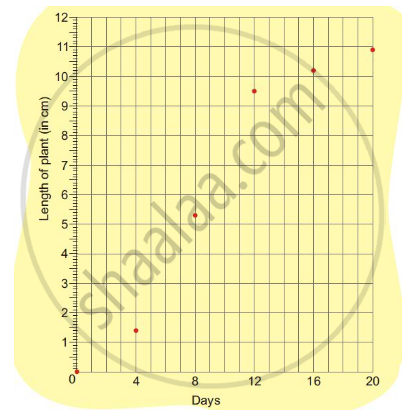
- What could be the length of this plant on the 14th day? Guess.
Find out from the growth chart

- Will the plant keep growing all the time? What will be its length on the 100th day? Make a guess!
Study the graph and answer the questions that follow.
- What information does the graph give?
- On which day was the temperature the least?
- On which day was the temperature 31°C?
- Which was the hottest day?
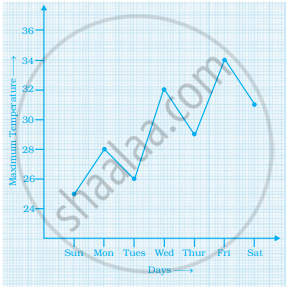
The following graph shows the number of people present at a certain shop at different times. Observe the graph and answer the following questions.
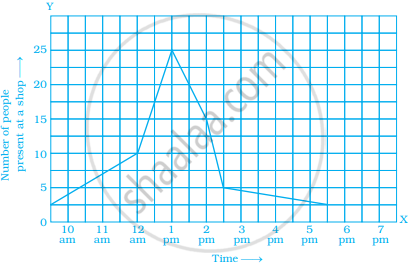
- What type of a graph is this?
- What information does the graph give?
- What is the busiest time of day at the shop?
- How many people enter the shop when it opens?
- About how many people are there in the shop at 1:30 pm?
